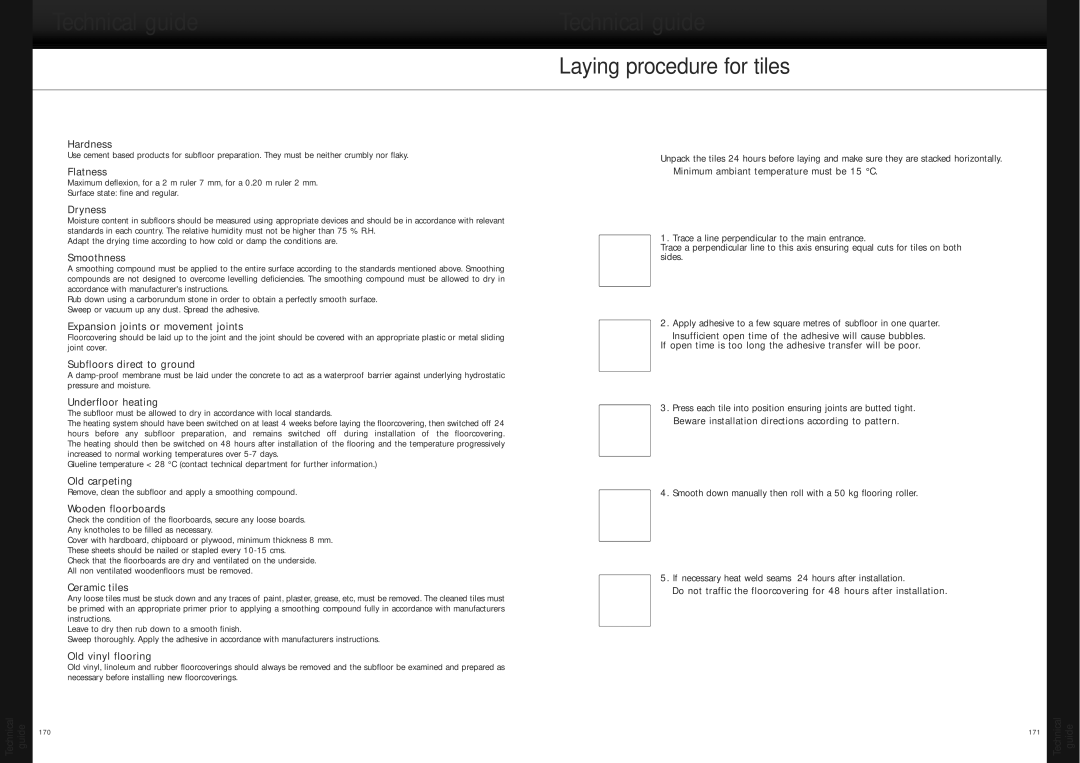SubFloor specifications
Henkel SubFloor is a revolutionary flooring solution designed to provide a robust foundation for various types of floor coverings, whether in residential or commercial spaces. Its innovative approach is driven by a commitment to quality, sustainability, and enhanced performance, which makes it a preferred choice among professionals in the construction and renovation sectors.One of the standout features of Henkel SubFloor is its exceptional leveling capability. The product is formulated to create a smooth and even surface, which is essential for the proper installation of tiles, carpet, or hardwood flooring. This characteristic not only simplifies the flooring process but also ensures long-lasting results, as an accurately leveled subfloor minimizes the risk of cracks and other issues that can arise over time.
Henkel SubFloor incorporates advanced technologies that enhance its performance. The product contains specially formulated binders that provide superior adhesion and flexibility. These binders allow the subfloor to accommodate minor shifts and movements in the building structure without compromising its integrity. This flexibility is particularly beneficial in areas prone to temperature fluctuations and humidity changes, as it reduces the likelihood of cracking or damage over time.
Another key characteristic of Henkel SubFloor is its moisture resistance. The innovative formulation helps prevent moisture penetration from below, which is crucial in areas like basements or ground floors. This resistance to moisture not only promotes a healthier indoor environment by reducing the risk of mold and mildew but also extends the lifespan of the floor covering applied on top.
Moreover, Henkel is committed to sustainability, and the SubFloor product reflects this ethos. The formulation incorporates eco-friendly materials that reduce the overall environmental impact while ensuring performance standards are met. This focus on sustainability aligns with the increasing demand for green building products in the construction industry.
In summary, Henkel SubFloor stands out as a versatile and reliable solution for achieving a stable foundation for various flooring types. Its leveling properties, advanced adhesion technology, moisture resistance, and commitment to sustainability make it an excellent choice for both professionals and DIY enthusiasts looking for quality flooring solutions. With Henkel SubFloor, users can enjoy peace of mind knowing they are paving the way for a successful flooring project.

